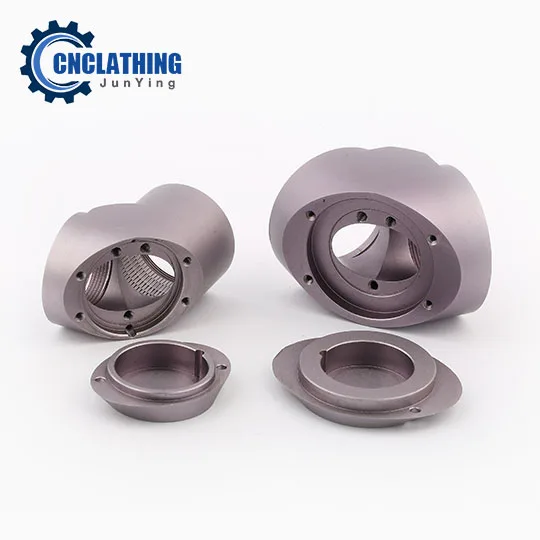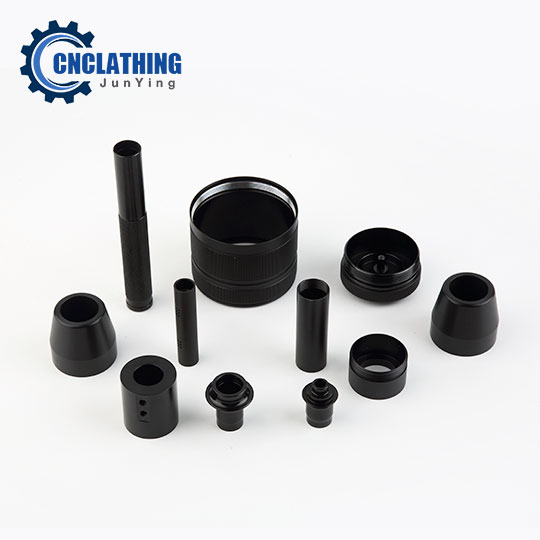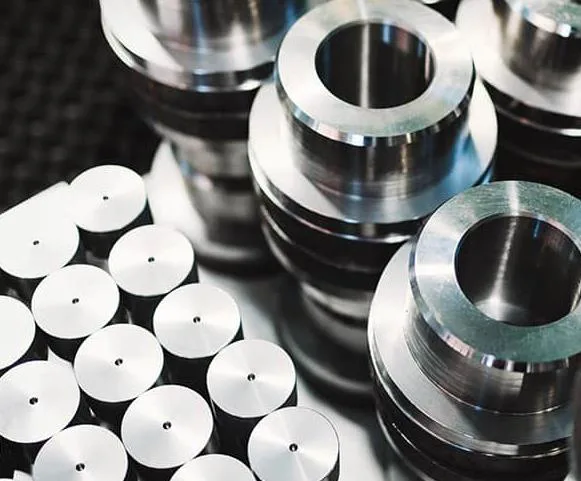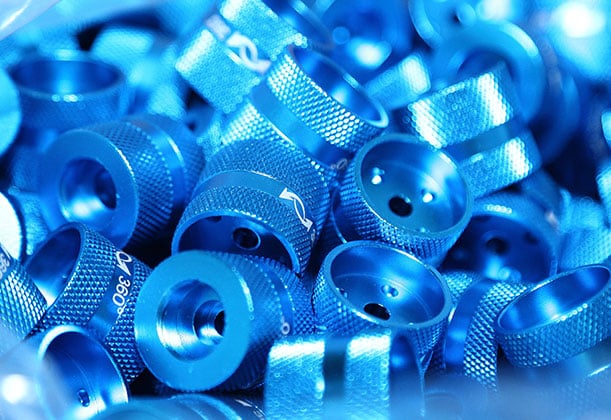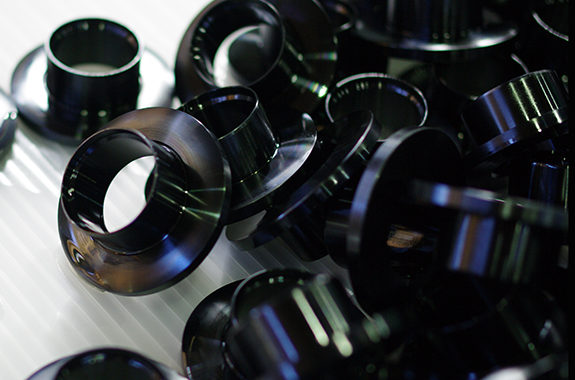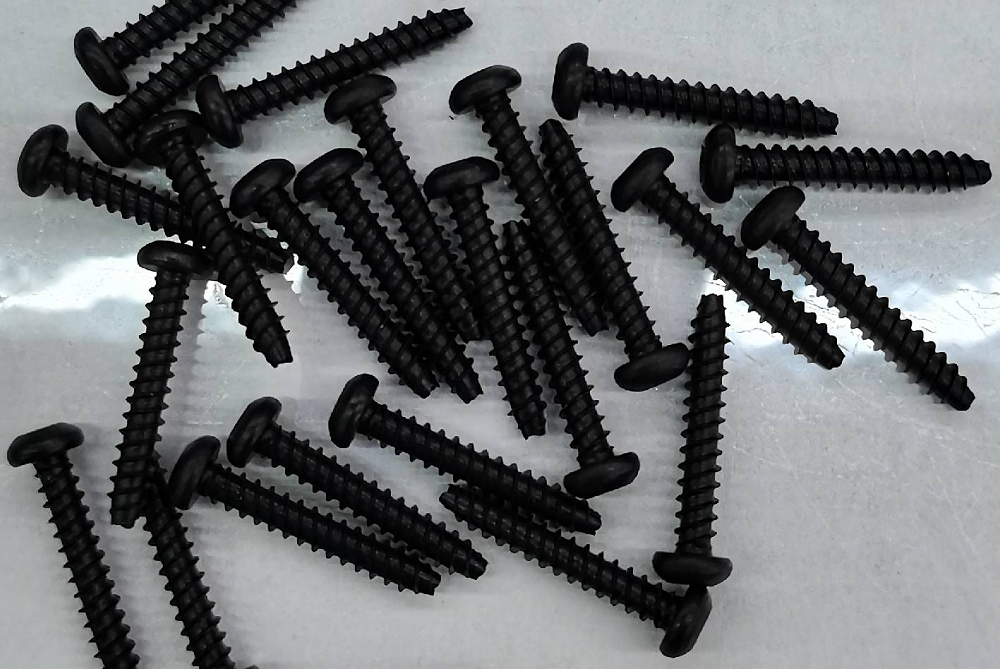Black anodizing is a commonly used blackening surface treatment technique for aluminum parts. This surface treatment process not only gives the metal surface an attractive appearance but also enhances its wear and corrosion resistance. It is worth noting that not only can aluminum undergo this treatment, but other metals, such as magnesium and titanium, can also undergo black anodizing. These advantages make black anodizing the preferred surface treatment process for non-standard parts in industries such as automotive and aerospace. In the field of mechanical parts processing and precision machining, this post-processing technique is extremely important. Next, let’s learn more about the black anodized finish.
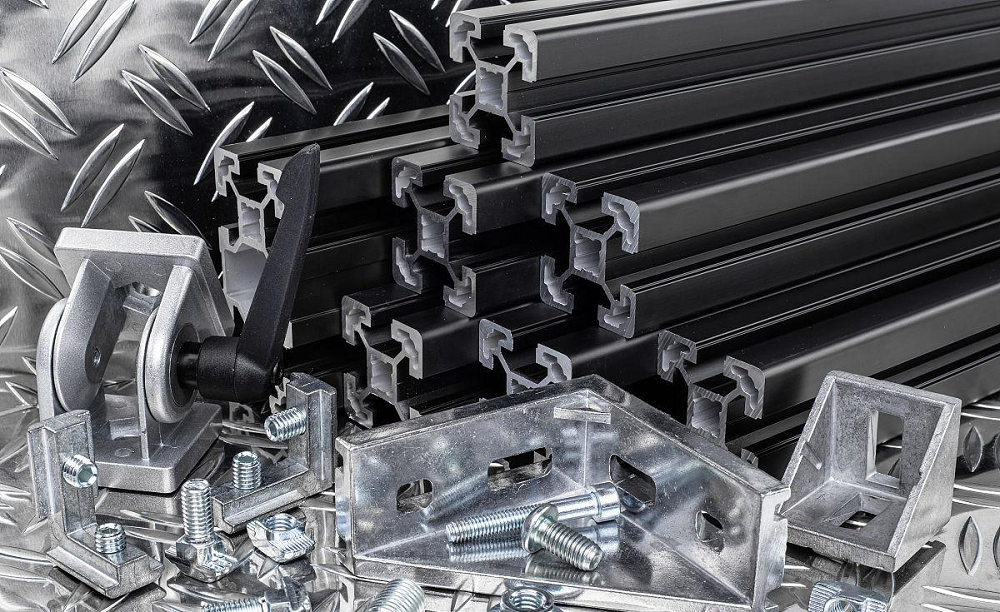
1. What is Black Anodizing?
Black anodizing (black anodized finish) is a process that blackens metal parts (usually aluminum) through electrolysis. Typically, before the blackening treatment, the aluminum must first undergo standard anodizing to form a porous layer of aluminum oxide. Subsequently, this oxide layer undergoes electrolytic coloring, using metal salts, inorganic dyes, or organic dyes to achieve a black color.
2. Black Anodizing Benefits
Black anodizing has some significant advantages in many applications that make it a popular surface treatment. Here are some of the key benefits of black anodizing:
Improved Corrosion Resistance
Black anodizing significantly improves the corrosion resistance of metal, making it more resistant to oxidation, chemical attack, and other environmental aggressors.
Improved Corrosion Resistance
Black anodizing significantly improves the corrosion resistance of metal, making it more resistant to oxidation, chemical attack, and other environmental aggressors.
Increase Hardness
This treatment increases the hardness of the metal, thereby improving its resistance to scratches and wear. This is especially important for mechanical parts and equipment.
Improved Appearance
Black anodizing gives the metal surface an even, consistent black appearance, thereby improving the aesthetics of the product. This is very important in areas such as consumer electronics, automotive parts and accessories.
Conductivity Control
Although the oxide film itself is typically an insulator, its conductivity can be controlled by adjusting process parameters, which is useful for applications requiring conductivity.
Thermal Stability
Black anodizing typically maintains its properties in high-temperature environments, making it useful in engine parts, heat exchangers, and other high-temperature applications.
Environmentally Friendly
Typically, black anodized uses environmentally friendly process fluids and materials, which helps reduce environmental impact.
Low Maintenance Requirements
Once black anodizing is completed, metal surfaces generally require less maintenance because of the extra protection provided by the oxide film.
These advantages make black anodizing a powerful tool for improving the performance and appearance of metal materials. It has been widely used in many fields such as automobile manufacturing, electronic manufacturing, aerospace, military, and medical equipment. However, choosing to use black anodizing still requires weighing the pros and cons based on specific project needs and cost considerations.
3. Black Anodizing Uses
What Metals Can Be Black Anodized?
Black anodizing is commonly used on the following metal materials:
- Aluminum: Aluminum is one of the most common metals to be black anodized. This treatment improves the corrosion resistance, hardness and wear resistance of aluminum, while also improving its appearance. As a result, black anodized aluminum is commonly used in automotive parts, aerospace components, electronic equipment, motorcycle parts, and a variety of outdoor products.
- Magnesium: Black anodizing can also be applied to magnesium to increase its corrosion resistance and hardness. Magnesium alloys are commonly used in aerospace, automotive manufacturing and electronic equipment.
- Titanium: Black anodizing of titanium metal improves its surface properties, such as hardness and wear resistance. Therefore, it is also frequently used in medical devices, aerospace and industrial applications.
- Zinc: Although less common than aluminum, magnesium, and titanium, zinc can also be black anodized to improve its surface properties and is used in specialty applications such as military equipment, electronic equipment, and some construction materials.
Generally speaking, black anodizing is usually used in areas where the corrosion resistance, hardness, wear resistance and appearance of metal materials need to be improved. Different metals may require different process parameters and processing conditions during this treatment to meet specific requirements.
What Metal Parts & Products Should Be Black Anodized?
Black anodizing is widely used on a variety of metal products to improve their performance and appearance. Here are some common metal products and areas where black anodizing is used:
- Auto parts: The automotive manufacturing industry often uses black anodizing to improve the corrosion and wear resistance of auto parts. This includes brake system parts, suspension components, exhaust systems, wheels, engine parts and exterior bodywork.
- Motorcycle Parts: Similar to cars, motorcycle parts can also benefit from black anodizing to enhance their performance and appearance. This includes motorcycle frames, exhaust pipes, brakes and suspension components.
- Electronic devices: Many electronic products, especially cell phones, tablets, laptops, cameras, etc., use black anodizing to improve appearance and wear resistance.
- Jewelry: Black anodizing is also used in jewelry manufacturing to create black metal jewelry with style and durability.
- Outdoor equipment: Outdoor equipment such as fishing rods, hunting guns, outdoor knives, and camping equipment are often black anodized to improve their corrosion and wear resistance.
- Military Equipment: Black anodizing is useful for military equipment as it provides corrosion resistance, abrasion resistance, and low visibility for weapons, military vehicles, and other military uses.
- Aerospace: Aircraft parts, spacecraft components and aerospace equipment often use black anodizing to improve their performance, especially under extreme environmental conditions.
- Medical Devices: Medical device manufacturers use black anodizing to improve the corrosion resistance of their products, especially where a high level of hygiene and durability is required.
These are just some examples; black anodizing can be used in many other areas and products to improve the performance and appearance of metal materials. Key factors in choosing to use black anodizing often include product design needs, environmental conditions, and cost considerations.
4. Black Anodizing Process
The process for black anodizing is similar to regular anodizing but involves differences in the selection of electrolytes and control of electrolysis conditions. Typically, special additives are added to the electrolyte used in black anodizing to control the color and hardness of the oxide film. Control of electrolysis conditions is also a crucial factor in achieving the desired black anodizing effect. Generally, black anodizing requires higher voltage and longer electrolysis times to form a thicker oxide film. However, excessive voltage and prolonged electrolysis can lead to defects such as white spots and pores on the oxide film’s surface.
How To Black Anodize Aluminum/Titanium?
The following are the steps typically used for aluminum and titanium black anodizing:
- Surface Pretreatment
Aluminum parts are degreased, de-rusted, and alkali-etched to remove surface impurities and achieve uniform surface roughness. - Anodizing
The aluminum part is used as the anode and immersed in an electrolyte solution (usually sulfuric acid). When electricity is applied, a porous layer of aluminum oxide forms on the surface. Specifically, as current passes through the electrolytic bath, oxygen molecules react with the aluminum surface to produce aluminum oxide. This oxide deposit penetrates the pores and covers the surface of the aluminum. - Coloring Treatment
The pores in the oxide film are filled with black pigment or metal ions through electrolytic coloring or dyeing processes.- Electrolytic Coloring
Electrolytic coloring is a process where, after anodizing, the aluminum part undergoes a second electrolytic treatment for coloring. The anodized part is immersed in an electrolyte containing heavy metal salts (commonly tin, nickel, or cobalt salts), with stainless steel electrodes typically used. During this process, the aluminum oxide layer acts as the cathode, and when current is applied, ions from the metal salts deposit into the micropores of the oxide film, forming a stable metal oxide layer that imparts a specific color. Electrolytic coloring not only achieves a rich range of colors but also significantly enhances color durability and fade resistance. - Inorganic Coloring
Inorganic coloring uses water-insoluble inorganic pigments, which are fixed into the pores of the anodized film through ion exchange or deposition. Typical inorganic coloring materials include cobalt sulfide, among others.
In black anodizing, inorganic coloring techniques are especially common. Their advantages include color stability, resistance to fading, and effective enhancement of UV resistance. Even with prolonged use or in harsh environments, the appearance remains consistent. - Organic Coloring
Organic coloring uses water-soluble organic dyes. The dye is dissolved in warm water to prepare a dye solution, and the anodized aluminum part is then immersed in it. Due to the microporous structure of the oxide film, organic dyes can fully penetrate into the oxide layer, achieving a uniform coloring effect. The depth of color depends on the dyeing time—the longer the time, the darker the color.
Although organic coloring allows for a wider range of color choices, its lightfastness and colorfastness are generally inferior to those of electrolytic or inorganic coloring. Therefore, it is more suitable for products that require bright colors but are not exposed to outdoor environments for extended periods.
- Electrolytic Coloring
- Sealing Treatment
This is the final step in the black anodizing process. The pores of the oxide film are sealed in hot water or chemical solutions to enhance the corrosion and stain resistance of the coating. - Surface Pretreatment
Aluminum parts are degreased, de-rusted, and alkali-etched to remove surface impurities and achieve uniform surface roughness. - Cleaning and drying
Treated metal pieces need to be cleaned to remove any remaining treatment agents or impurities. Afterwards, the metal needs to be thoroughly dried to ensure the quality and stability of the oxide film.
The principle of black anodization is based on electrochemistry and redox reactions. By controlling parameters such as current density, treatment time, electrolyte composition, and dye selection, the color and performance of the oxide film can be adjusted. This process is often used to improve the appearance and performance of metal parts, such as increasing their resistance to corrosion and wear.
Materials and Tools Required for Black Anodizing Treatment
The black anodizing process is relatively straightforward. From pretreatment to post-treatment, the following materials cover all aspects of the process. The main materials include: sulfuric acid electrolyte, cathode, dyeing tank, dyes, DC power supply, acid-resistant tank for holding the electrolyte, degreasing agent for cleaning the tank after treatment, and conductive wires for suspending the aluminum parts.
Black Anodizing Dye
Black anodizing can be made to show different oxide films through dyes:
Organic Dyes
- Phthalocyanine Dyes: Phthalocyanine dyes possess excellent light and thermal stability, allowing them to form a stable dyed layer on the aluminum surface, resulting in a rich and deep color. Due to the relatively stable molecular structure of phthalocyanine dyes, the colored layer maintains long-lasting durability.
- Acid Dyes: Acid dyes form a dyed layer on the aluminum surface that is typically a lighter, dark brown color. However, deep coloring can be achieved through near-infrared irradiation. The stable molecular structure of acid dyes also provides a certain level of durability to the dyed layer.
Inorganic Dyes
- Manganate Salts: Manganate salts are a common black anodizing dye, known for their simple production process and low cost. Aluminum surfaces dyed with manganate salts appear deep gray or black.
- Copper Salts and Iron Salts: Copper and iron salts can also be used as dyes in the black anodizing process. The colored layer formed with these dyes gives the surface a silver-gray or black appearance. However, these dyes generally have a higher usage cost and the dyed layer tends to be less durable.
Other Substances Used for Dyeing
- Organic Acids: Organic acids can form a stable dyed layer on the aluminum surface, producing a deep, rich color. However, the specific type of acid dye should be chosen based on different application requirements.
- Black Iron Oxide (Magnetite): Black iron oxide is a natural magnetic mineral with good dyeing properties. The aluminum surface dyed with black iron oxide exhibits a dark, glossy appearance.
5. Black Anodizing Disadvantages & Limitations
Although black anodizing has many advantages and a wide range of applications, it still has the following limitations that force you to choose other surface treatments that are more beneficial to your project in some cases:
Color Variation and Fading Are Unavoidable
The color of black anodizing is mainly achieved through dyeing, and its appearance is affected by the thickness of the oxide layer, dye quality, and sealing effectiveness. Even with strict control of process parameters, there may still be color differences between batches, especially in large-scale production or when changing processing equipment. In addition, surfaces dyed with organic dyes are prone to fading after prolonged exposure to ultraviolet light, and even inorganic dyes may experience color deterioration in long-term outdoor environments, affecting appearance consistency. Furthermore, insufficient sealing or a thin oxide layer can also lead to surface fading or even loss of color. To achieve optimal lightfastness, high-quality dyes and thorough sealing treatment are necessary.
Limited Dimensional Tolerance
Anodizing creates an oxide layer of 5–25μm thickness on the surface of aluminum, which directly affects the dimensional accuracy of parts. For components that require high-precision assembly, the thickness of the oxide layer must be compensated for during the machining stage; otherwise, it may result in overly tight fits or poor assembly. Additionally, the oxide film tends to deposit unevenly on sharp corners and complex structures, which further increases the difficulty of dimensional control.
Cracking of the Oxide Layer
During the anodizing process, aluminum parts undergo an electrolytic reaction. Thin-walled structures are prone to minor deformation due to stress concentration, and the difference in thermal expansion coefficients between the aluminum substrate and the oxide layer may cause cracks in the black anodized layer.
Limited Material Applicability
Black anodizing is not suitable for all metals; it is only applicable to specific metals such as aluminum, magnesium, and titanium. Moreover, not all aluminum alloys can undergo anodizing—mainly 5xxx, 6xxx, and 7xxx series aluminum alloys are suitable, with the 6xxx series being the most common and yielding the best processing results.
6. Black Anodize vs Black Oxide
What is the Difference Between Black Oxide and Black Anodize?
Here’s a comparison table outlining the key differences between Black Oxide Coating and Black Anodizing:
| Aspect | Black Oxide Coating | Black Anodizing |
|---|---|---|
| Process Type | Chemical conversion | Electrochemical (anodic oxidation) |
| Suitable Materials | Iron, steel, stainless steel, copper, zinc, silver | Mainly aluminum, some magnesium & titanium alloys |
| Main Purpose | Corrosion resistance, reduce reflection, aesthetics | Corrosion & wear resistance, aesthetics, insulation |
| Layer Thickness | Very thin (typically <1 μm) | Thicker layer (5–25 μm) |
| Color | Black to dark blue/gray | Black (also other colors possible) |
| Durability | Moderate, less resistant to abrasion | High, increases surface hardness and durability |
| Adhesion | Coating is chemically bonded but relatively weak | Oxide layer is integral to the metal surface |
| Reflectivity | Reduces glare and reflection | Can be matte or glossy depending on process |
| Electrical Properties | Conductive (does not insulate) | Non-conductive (insulating layer) |
| Environmental Resistance | Good, but can wear off over time | Excellent, especially against UV and weather |
| Application Methods | Immersion in chemical bath (various temperatures) | Immersion in electrolyte with electric current |
| Typical Uses | Tools, fasteners, firearms, hardware | Electronic housings, automotive, aerospace parts |
Black Anodized vs Black Oxide, Which is Better?
- Choose Black Anodized if:
- Your parts are made of aluminum or aluminum alloys.
- You need high wear and corrosion resistance.
- You want a durable, attractive, metallic finish.
- Electrical insulation is beneficial.
- Choose Black Oxide if:
- Your parts are steel, stainless steel, copper, or similar metals.
- You need a low-cost, basic black finish.
- Electrical conductivity is required.
- A thinner layer is sufficient and minor wear is acceptable.
7. Black Anodized vs Powder Coat
What is the Difference Between Black Anodized and Powder Coating?
Here’s a comparison table outlining the key differences between Powder Coating and Black Anodizing:
| Aspect | Black Anodizing | Powder Coating |
|---|---|---|
| Process | Electrochemical (anodic oxidation) | Sprayed coating, then baked |
| Materials | Only aluminum & aluminum alloys | Most metals (aluminum, steel, etc.) |
| Appearance | Metallic gloss, uniform, durable | Matte, semi-matte, or glossy; more color options |
| Layer Bonding | Integral with metal surface | Independent coating layer |
| Features | High wear & corrosion resistance; insulating | Good corrosion & wear resistance; environmental-friendly |
| Applications | Electronics, bikes, cameras, etc. | Automotive, furniture, appliances, etc. |
Black Anodized vs Powder Coat, Which Is Better?
Choose black anodizing if you are working with aluminum and want a tough, long-lasting, metallic finish with excellent wear and corrosion resistance.
Choose powder coating if you need to coat a variety of metals, desire a broader range of colors and finishes, or need a cost-effective solution for large metal items.
Black anodizing provides an attractive surface finish for aluminum and other metals. In addition to its aesthetic appeal, black anodizing also improves the corrosion resistance and wear resistance of parts, while being easy to maintain. Are you looking to anodize your aluminum parts for a high-quality and durable surface finish?
JUNYING offers one-stop custom machining and surface treatment services to meet your project needs. We also guarantee high-quality, durable surface finishes with consistent color. With extensive experience in precision machining and mechanical parts processing, we can meet all kinds of custom part requirements. Entrust your project to us today!


